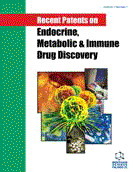Abstract
Dolichol is a polysoprenoid lipid ubiquitous in eukaryotic cell membranes. Its molecular structure comprises a sequence of E and Z unsatured isoprene units tethered by a satured isoprene unit bearing a hydroxyl group. Dolichol is mostly present in the native form or esterified by lipid acids, and it is thought to locate in the innermost part of the membrane double layer, intertwining with the hydrophobic terminus of the phospholipids. In spite of this peculiar arrangement, no clear biological function of dolichol has been evidenced yet, although a minor dolichyl phosphate pool is known to assist the N-glycosylation of proteins in the endoplasmic reticulum. Dolichol was recently found to strongly interact with free-radicals, leading to a fast molecular disruption without peroxidized by-products. This scavenging property may explain why dolichol accumulates with age, representing an excellent biomarker of the ageing process also sensitive to ageing-preventing dietary regimes in living animals. Furthermore, dolichol was shown to possess photoprotective characteristics towards UV radiation. On account of its high biocompatibility, its free-radical scavenging and photoprotective properties, and its easy preparation from vegetable extracts, dolichol has been proposed as main components for dermatological and cosmetic compositions. The scientific background and the related patents are reviewed here.
Keywords: Dolichol, polyprenols, sunscreen, free-radical, scavenging, cell membrane, photooxidation
 5
5





















